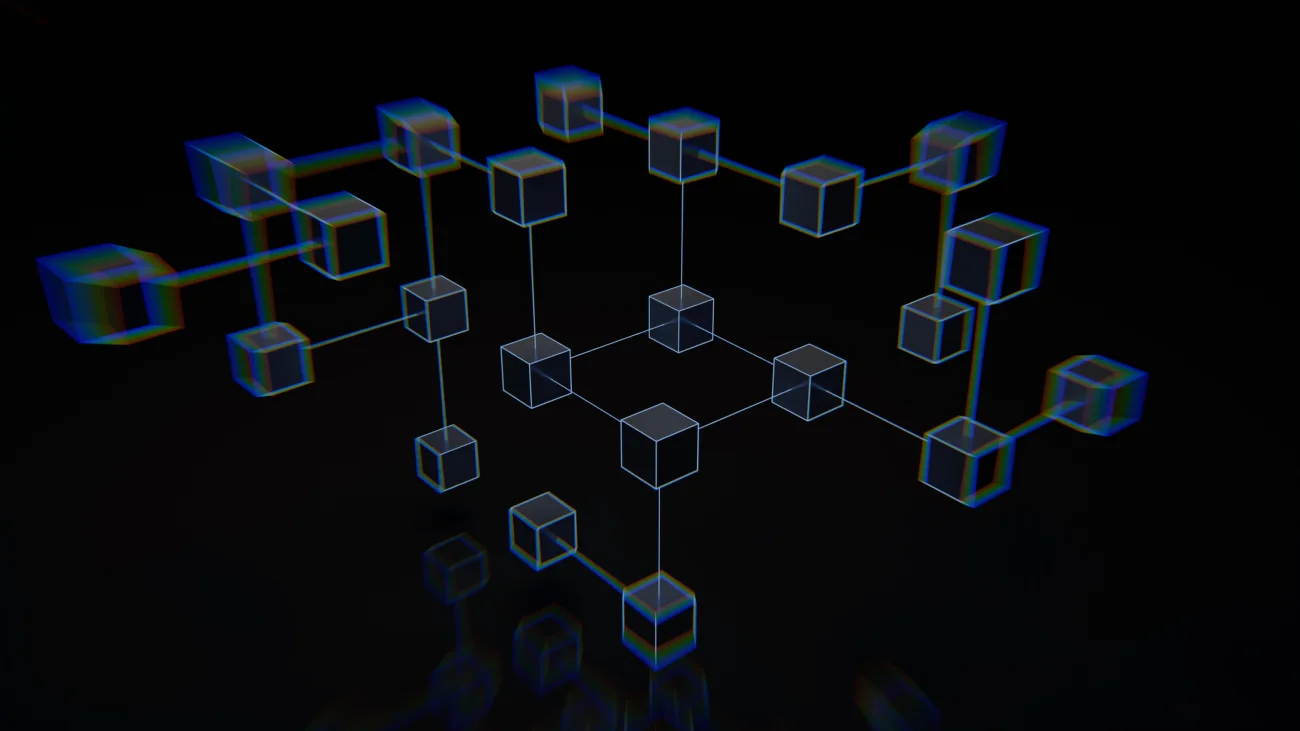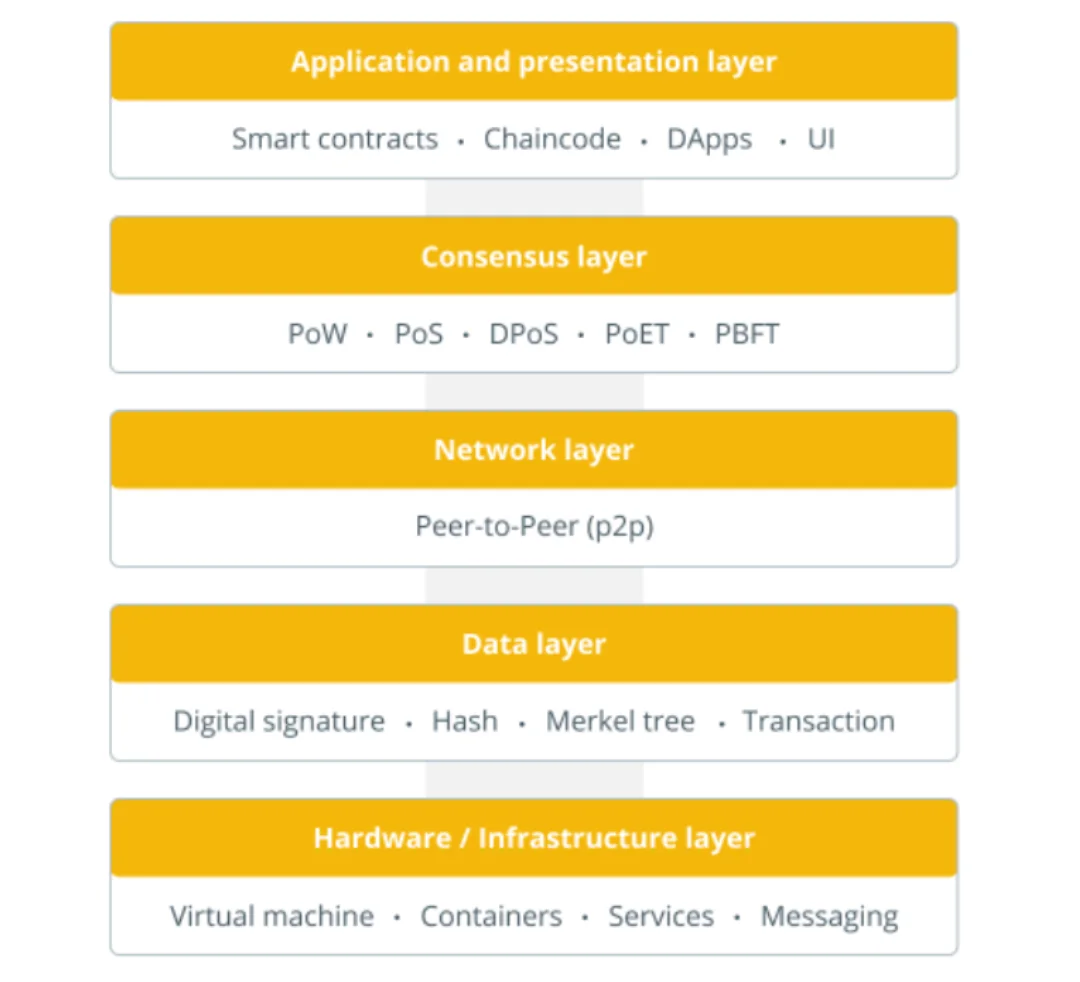What Are Blockchain Layers and How Do They Work
6
0

Cryptocurrencies and blockchain technology have grown rapidly in recent years. However, this growth has brought to light several issues that need to be addressed before the whole world move to the blockchain.
One of the most important concerns confronting blockchain technology is scalability. Blockchain layers are proposed solutions to the scalability issue of blockchains. Scalability solutions are currently classified into two types: Layer 1 and Layer 2.
In this article, we'll look into what blockchain layers are and how they work.
Let’s get started!
What Is Blockchain Scalability

The phrase "scaling" in blockchain technology refers to an increase in the system throughput rate, measured by the number of transactions processed per second. With the increasing usage of cryptocurrencies in everyday life, it is now required to build a blockchain layer for improved network security, recordkeeping, and other purposes.
Blockchain is the first layer of the decentralized ecosystem. Layer 2 is a third-party integration used with Layer 1 to enhance the number of nodes and system throughput. Many Layer 2 blockchain technologies are currently being deployed. Smart contracts are used in these systems to automate transactions.
Why Is Blockchain Scalability Important
Different experts define the term "scalability" differently. However, at its core, blockchain scalability refers to the system's ability to deliver a rich experience to every user, regardless of the total number of users at any given time.
Throughput refers to the number of transactions processed by the system per second. While Visa's VisaNet electronic payment network can process more than 20,000 transactions per second, Bitcoin's main chain can only process 3 to 7 transactions per second.
The capability difference is surprising, but it has a simple explanation. Bitcoin is a decentralized system, whereas VisaNet is a regulated system. To preserve its customers' privacy, the former demands more processing power and time. Each data transaction must go through a number of steps, including node network acceptance, mining, dissemination, and validation.
With cryptocurrencies poised to overtake the business sector, blockchain developers are striving to widen the scope of blockchain administration. By creating blockchain layers and enhancing Layer 2 scalability they intend to reduce processing times and increase TPS.
What Are Blockchain Layers
Blockchain technology is a unique amalgamation of several technologies that operate in tandem to keep the system working smoothly. Mathematical computation, cryptography, game theory, peer-to-peer networks, and validation protocols all work together to support blockchain operations.
As blockchains do not have a centralized governing authority, all transactions are rigorously safeguarded, and data is securely stored on a distributed ledger. The distributed ledger technology (DLT) operates on a predefined protocol, with several computers (or nodes) throughout the network reaching a 'consensus' to validate transactional data. Each node adds, scrutinizes, and alters entries as they come.
Blockchains use a layered design to support this one-of-a-kind method of transaction authentication. There are five levels involved, each with its own set of functions. Let's get started and learn about the architecture and what each layer does.
The layered structure of the blockchain architecture

1. The Hardware Infrastructure Layer
Blockchain data is securely stored on a data server. When we browse the web or use blockchain apps, our computers request access to this data from the server. The client-server architecture is the framework that enables this data exchange.
Blockchains are peer-to-peer (P2P) networks that connect clients with "peer-clients" to accelerate and simplify data sharing. It is nothing more than a vast network of devices communicating and exchanging data. This is how a distributed ledger is born. A node is any device on the network that connects with another device. At random, each node examines transactional data.
2. The Data Layer
Blockchains are just a lengthy chain of 'blocks' that store transaction data. When a certain number of transactions are authenticated by nodes, the data is bundled into a 'block,' uploaded to the blockchain, and linked to the previous block of data. The 'Genesis Block' does not need to be linked to any previous blocks because it is the first block in the chain. Instead, the following block is linked to the Genesis block, and the process is repeated for each successive block. This is how a blockchain emerges and expands over time.
Every transaction is 'digitally signed' with the private key from the sender's wallet. This key is only accessible to the sender, ensuring that the data is not accessed or tampered with by anyone else. In blockchain terminology, this is called 'finality'. The digital signature also protects the owner's identity, which is encrypted for maximum security.
3. The Network Layer
The P2P architecture enables multiple nodes to transmit transaction data in order to achieve an agreement on a transaction's legality. This means that in order to communicate fast, every node on the network must be able to discover other nodes on the network. The network layer facilitates this 'inter-node communication.' Because it controls node identification, block production, and block adding, this layer is also known as the 'Propagation Layer.'
4. The Consensus Layer
The primary layer in blockchain operations. This layer is in charge of transaction validation, and if it fails, the entire system fails. This layer is in charge of the protocol, which necessitates a certain number of nodes to validate a single transaction. As a result, each transaction is processed by a large number of nodes, all of which must arrive at the same conclusion and agree on the transaction's authenticity. This approach retains the blockchain's decentralized nature since no node has sole control over any transactional data, and the role is distributed. This is known as the consensus mechanism.
Because there are so many nodes processing transactions, packing them up, and adding them to the blockchain, several blocks may be generated at the same time, resulting in a blockchain branch. However, at all times, a single chain block addition is needed, and the consensus layer ensures that this dispute is addressed.
5. The Application Layer
This layer hosts smart contracts and decentralized apps (dApps). Contract expiration dates, spot price achievement, and other factors influence smart contracts' decisions. The activities that emerge from these decisions are carried out by dApps. All of this takes place at the application layer.
dApps also facilitate consumer device communication with the blockchain. As a result, the application acts as the user-facing front end, while the main blockchain acts as the backend, where the data is securely stored.
Blockchain Layers Explained
Layer 0
Blockchain layer zero is made up of components that help to bring blockchain to life. This is the technology that allows Bitcoin, Ethereum, and other blockchain networks to function. The internet, hardware, and connections that allow Layer 1 to work effectively are examples of Layer 0 components.
Layer One
The security of the foundation layer is based on its immutability. When people discuss Ethereum, they are referring to the Ethereum network, also known as layer one. This layer is responsible for consensus methods, programming languages, block time, dispute resolution, and the rules and parameters that assure a blockchain network's core functionality.
Problems with Layer One
When utilized in tandem, these scaling techniques increase network throughput. Layer one, on the other hand, appears to be falling short as the number of blockchain users expands. The obsolete and inefficient proof-of-work consensus process is still in use on the layer one blockchain.
This approach is slower than others, but it is more secure. To solve cryptographic algorithms, miners must employ computing power. As a result, more processing power and time are required in the long run. Furthermore, as the number of users increases, so does the workload on layer one blockchain. As a result, processing rates and capacities have dipped.
Possible Solutions
Proof-of-stake is an alternative consensus mechanism that Ethereum 2.0 will use. This consensus mechanism verifies new transaction data blocks based on network participants' staking collateral, resulting in a more efficient operation.
Sharding is a technique for scaling the layer one blockchain burden problem. To put it simply, sharding divides the work of validating and authenticating transactions into smaller, more manageable chunks. As a result, the burden may be distributed over the network in order to make use of more nodes' computing capability. Many transactions can be executed sequentially as well as simultaneously since the network processes these shards in parallel.
Layer Two
The L2 solution is an overlapping network above the base layer. Layer two is used by protocols to promote scalability by separating some interactions from the base layer. As a result, smart contracts on the main blockchain protocol only handle deposits and withdrawals, while ensuring that off-chain transactions adhere to rules. One such example of a layer two blockchain is Bitcoin's Lightning Network.
So, what exactly is the difference between blockchain layers one and two? The first layer of the decentralized ecosystem is the blockchain. Layer two is a third-party integration that works with layer one to enhance the number of nodes and, as a result, system throughput. Many layer two blockchain solutions are currently being implemented.
Layer Two Scaling Solutions
In recent years, layer two protocols have grown in popularity, and they have shown to be the most effective method for addressing scalability issues in PoW networks in particular. The following sections discuss several layer two scaling strategies.
Nested Blockchain
A layer two blockchain is stacked on top of another. In essence, layer one sets the parameters, while layer two executes the operations. A single mainchain may have many blockchain layers. Consider it to be a standard business structure.
Instead of having one person (e.g., the manager) do everything, the manager delegated duties to subordinates, who then reported back to management when they were completed. As a result, the manager's burden decreases, and scalability increases. For example, the OMG Plasma Project acts as a level two blockchain for Ethereum's level one protocol, enabling cheaper and quicker transactions.
State Channels
A state channel increases overall transaction capacity and speed by allowing two-way communication between a blockchain and off-chain transactional channels via various methods. To validate a transaction via a state channel, the miner does not need to be directly engaged.
Instead, it is a network-adjacent resource that is safeguarded by a multi-signature or smart contract method. The eventual state of the channel and all its inherent transitions are broadcast to the underlying blockchain when a transaction or batch of transactions on a state channel is completed.
The Bitcoin Lightning and Ethereum's Raiden Network are two examples of state channels. In the trilemma tradeoff, state channels provide some decentralization in exchange for increased scalability.
Sidechains
A sidechain is a transactional chain that runs alongside the blockchain and is used for large-scale bulk transactions. Sidechains have their own consensus algorithm that can be tuned for speed and scalability, and a utility token is frequently utilized as a part of the data transfer mechanism between side and main chains. The main function of the mainchain is to provide general security and dispute resolution.
Sidechains differ from state channels in various ways. To begin with, sidechain transactions are not private between participants; rather, they are fully recorded on the ledger. Furthermore, security breaches on the sidechain have no effect on the mainchain or other sidechains. Building a sidechain from the ground up requires a significant amount of time and effort.
Rollups
Rollups are layer two blockchain scaling methods that execute transactions outside of the layer one network and then upload the resulting data to the layer two blockchains. Layer one can keep rollups safe because the data is on the foundation layer.
Users profit from rollups because they increase transaction throughput, open participation, and reduce gas fees.
Layer Three
The application layer is sometimes known as layer three or L3. The L3 projects serve as a user interface while concealing the technical details of the communication channel. As mentioned in the blockchain architecture's layered structure, L3 apps are what give blockchains their real-world applicability.
The Bottom Line
Scalability is one of the reasons why crypto mainstream acceptance is currently unattainable in the blockchain industry. The urge to develop blockchain protocols will increase as the demand for cryptocurrency rises. Because each blockchain level has its own set of constraints, the final solution will be to develop a system capable of overcoming the scalability trilemma.
Layer one is critical because it serves as the basis for decentralized systems. The underlying blockchain's scalability issues are addressed via layer two protocols. Unfortunately, the majority of layer three protocols (DApps) still function solely on layer one, skipping layer two. It's hardly surprising that these systems aren't working as well as they should.
Layer three apps are critical because they contribute to the development of real-world use cases for blockchains. In contrast to traditional networks, they will not capture nearly as much value as their core blockchain.
You can also visit our CoinStats blog to learn more about wallets, cryptocurrency exchanges, portfolio trackers, tokens, etc., and explore our in-depth buying guides on buying various cryptocurrencies, such as How to Buy Radix, What Is DeFi, How to Buy cryptocurrency, Why You Should Keep Your Crypto in Non-custodial Wallets, etc.
Investment Advice Disclaimer:
The information contained on this website is provided to you solely for informational purposes and does not constitute a recommendation by CoinStats to buy, sell, or hold any securities, financial product, or instrument mentioned in the content, nor does it constitute investment advice, financial advice, trading advice, or any other type of advice. Our information is based on independent research and may differ from what you see from a financial institution or service provider.
6
0









